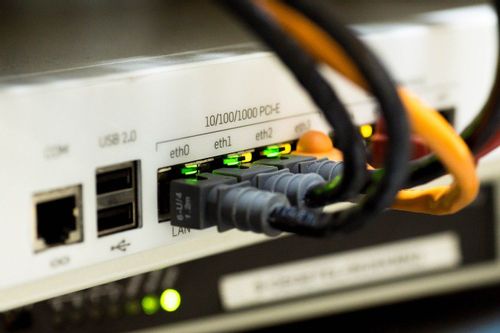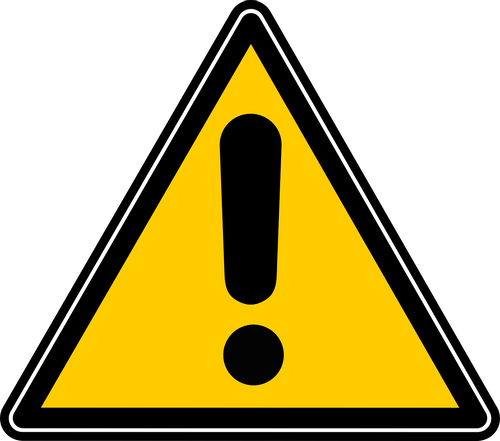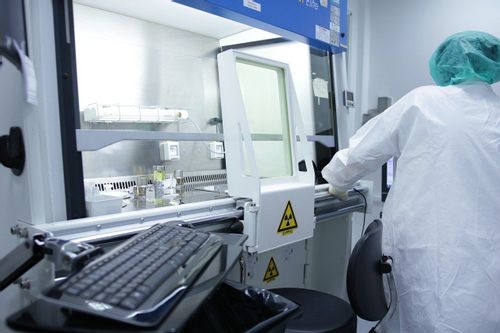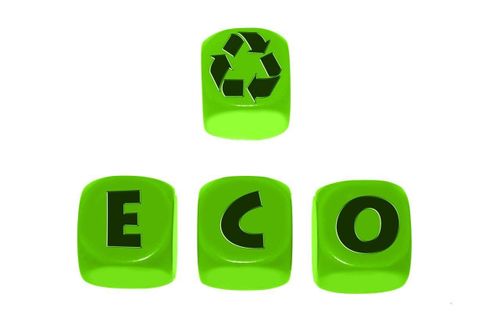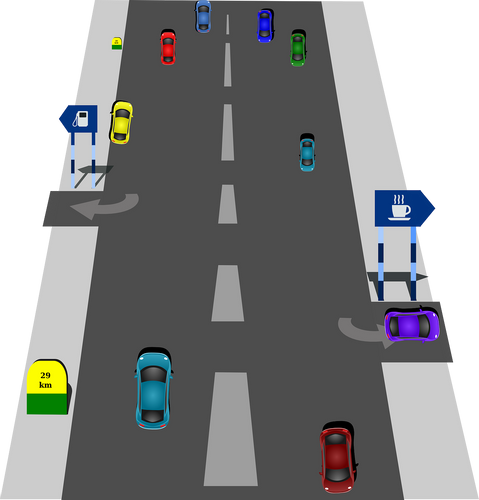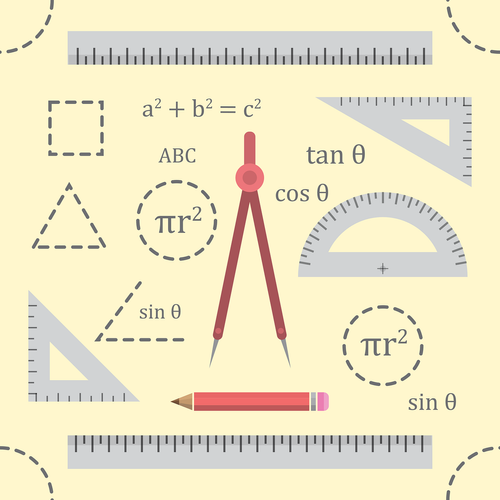Standards Packages
iTeh together with SIST has developed and compiled a comprehensive collection of standard packages to support your standard requirements. Our packages cover an array of content that includes quality management, risk management, road vehicles, machine safety, and much more. With over 200 packages to choose from, you are sure to find a collection to suit your standard needs.
Latest Standards
This document guides users of the EN 45545 series, particularly EN 45545 2:2020+A1:2023, in the application of these standards in designing and assessing Ni-Cd batteries on board trains for their fire protection measures.
This document excludes any new requirements, considering only the requirements stated by the above listed standards.
However, since the EN 45545 series contain generic requirements and do not specifically refer to Ni-Cd batteries, this document helps the application for those batteries.
- Technical report10 pagesEnglish languagesale 10% offe-Library read for1 day
IEC 63522-5:2025 This part of IEC 63522 is used for testing all kinds of electrical relays and for evaluating their ability to perform under expected conditions of transportation, storage and all aspects of operational use.
This document defines a standard test method for insulation resistance.
- Standard13 pagesEnglish languagesale 10% offe-Library read for1 day
This amendment of EN 50604-1 provides clarification to questions raised by test institutes for being able to proceed in testing according to the standard. It is ready for immediate release / publication.
- Amendment4 pagesEnglish languagesale 10% offe-Library read for1 day
IEC 60730-2-8:2025 applies to electrically operated water valves
• for use in, on, or in association with equipment for household appliance and similar use;
NOTE 1 Throughout this document, the word "equipment" means "appliance and equipment" and "control" means "electrically operated water valve".
EXAMPLE 1 Electrically operated water valves for appliances within the scope of IEC 60335.
• for building automation within the scope of ISO 16484 series and IEC 63044 series (HBES/BACS);
EXAMPLE 2 Independently mounted water valves, controls in smart grid systems and controls for building automation systems within the scope of ISO 16484-2.
• for equipment that is used by the public, such as equipment intended to be used in shops, offices, hospitals, farms and commercial and industrial applications;
EXAMPLE 3 Electrically operated water valves for commercial catering, heating and air-conditioning equipment.
• that are smart enabled electrically operated water valves;
EXAMPLE 4 Smart grid control, remote interfaces and controls of energy-consuming equipment including computer or smart phone.
• that are AC or DC powered electrically operated water valves with a rated voltage not exceeding 690 V AC or 600 V DC;
• used in, on, or in association with equipment that uses electricity, gas, oil, solid fuel, solar thermal energy, etc., or a combination thereof;
• utilized as part of a control system or controls which are mechanically integral with multifunctional controls having non-electrical outputs;
• using NTC or PTC thermistors and to discrete thermistors, requirements for which are contained in Annex J of Part 1;
• responsive to or controlling such characteristics as temperature, pressure, passage of time, humidity, light, electrostatic effects, flow, or liquid level, current, voltage, acceleration, or combinations thereof;
• in which actuators and valve bodies are designed to be fitted to each other.
• as well as manual controls when such are electrically or mechanically integral with automatic controls.
NOTE 2 Requirements for manually actuated mechanical switches not forming part of an automatic control are contained in IEC 61058-1-1.
This document applies to
- the inherent safety of electrically operated water valves, and
- functional safety of electrically operated water valves and safety related systems,
- controls where the performance (for example the effect of EMC phenomena) of the product can impair the overall safety and performance of the controlled system,
- the operating values, operating times, and operating sequences where such are associated with equipment safety.
This document specifies the requirements for construction, operation and testing of electrically operated water valves used in, on, or in association with an equipment.
This document contains requirements for electrical features of water valves and requirements for mechanical features of valves that affect their intended operation.
This document does not
• apply to electrically operated water valves intended exclusively for industrial process applications unless explicitly mentioned in the relevant Part 2 or the equipment standard. However, this document can be applied to evaluate automatic electrical controls intended specifically for industrial applications in cases where no relevant safety standard exists.
• apply to
- electrically operated water valves of nomi
- Standard52 pagesEnglish languagesale 10% offe-Library read for1 day
2022-05-30: Fragments 1 to 7 circulated to parallel CDV separately, then merged into this PR before FDIS stage
2020-10-06: PR changed from A3 to new edition furhter to same change at IEC
- Standard99 pagesEnglish languagesale 10% offe-Library read for1 day
IEC 63522-18:2025 This part of IEC 63522 is used for testing along with the appropriate severities and conditions for measurements and tests designed to assess the ability of DUTs to perform under expected conditions of transportation, storage and all aspects of operational use. The object of this test is to determine the thermal resistance of the relay coil.
- Standard11 pagesEnglish languagesale 10% offe-Library read for1 day
IEC 62290‑1:2025 provides an introduction to the IEC 62290 series and deals with the main concepts, the system definition, the principles and the basic functions of UGTMS (urban guided transport management and command/control systems) for use in urban guided passenger transport lines and networks. This document is applicable for new lines or resignalling of existing lines.
This document is applicable to applications using:
- continuous data transmission,
- continuous supervision of train movements by train protection profile, and
- localisation of trains by onboard UGTMS equipment (reporting trains), and optionally by external wayside (and optionally onboard) device.
The IEC 62290 series specifies the functional, system and interface requirements for the command, control, and management systems intended to be used on urban, guided passenger transport lines and networks.
These systems are designated herein as urban guided transport management and command/control systems (UGTMS). UGTMS cover a wide range of operations needs from non-automated (GOA1) to unattended (GOA4) operation. A line may be equipped with UGTMS on its full length or only partly equipped.
The IEC 62290 series does not specifically address security issues. However, aspects of safety requirements may apply to ensuring security within the urban guided transit system.
The main objectives of this series are as follows:
- to provide a baseline system description and functional requirements specification for a transport authority to use in a request for proposal,
- to provide recommendations for those transport authorities wishing to acquire an interoperable or interchangeable system.
It is the responsibility of the transport authority concerned to decide on how to apply the IEC 62290 series and to take into account their particular needs.
This document is applicable to applications using:
- continuous data transmission,
- continuous supervision of train movements by train protection profile, and
- localisation of trains by onboard UGTMS equipment (reporting trains), and optionally by external wayside (and optionally onboard) device.
This third edition cancels and replaces the second edition published in 2014. This edition constitutes a technical revision.
This edition includes the following significant technical changes with respect to the previous edition:
a) Figure 3, giving the system environment of UGTMS, has been amended to reflect the adaptation of it;
b) external equipment for which no requirement is described in the IEC 62290 series has been removed;
c) new external equipment having such requirements (like the washing machine) has been added.
- Standard36 pagesEnglish languagesale 10% offe-Library read for1 day
This document specifies requirements for the establishment of an operations control programme (OCP) to ensure efficient cleanroom operation within specified cleanliness levels. The OCP includes management of personnel, entry and exit of personnel and materials, cleaning, maintenance and monitoring.
This document specifies operational requirements that relate to:
— providing a system that specifies policies and operational procedures for maintaining cleanliness levels;
— training of personnel;
— transferring, installing and maintaining stationary equipment;
— transferring material and portable equipment into and out of the cleanroom;
— maintaining a personnel management programme that includes a gowning programme;
— maintaining a cleaning programme that addresses special cleaning;
— maintaining a cleanroom maintenance programme;
— establishing an appropriate monitoring programme.
This document gives additional information in annexes for:
— personnel management;
— gowning;
— training;
— cleaning.
This document does not specifically address biocontamination control. For details on this topic, see ISO 14698-1 and ISO 14698-2.
This document does not apply to the following topics:
— aspects of health and safety management that have no direct bearing on contamination control;
— specific requirements for individual industries;
— specific requirements for equipment and materials used or associated with processes and products;
— design details of equipment;
— cleaning agent compatibility with cleanroom materials.
- Standard32 pagesEnglish languagesale 10% offe-Library read for1 day
- Corrigendum1 pageEnglish languagesale 10% offe-Library read for1 day
IEC 62290‑3:2025 specifies the system architecture for urban guided transport management and command/control systems (UGTMS) as defined in IEC 62290‑1 and IEC 62290‑2, and the allocation of functions and requirements defined in IEC 62290‑2 to the different UGTMS subsystems (designated as system constituents in IEC 62290‑1 and IEC 62290‑2), for use in urban guided passenger transport lines and networks.
The IEC 62290 series specifies the functional, system and interface requirements for the command, control, and management systems intended to be used on urban, guided passenger transport lines and networks.
These systems are designated herein as urban guided transport management and command/control systems (UGTMS). UGTMS cover a wide range of operations needs from non-automated (GOA1) to unattended (GOA4) operation. A line may be equipped with UGTMS on its full length or only partly equipped.
The IEC 62290 series does not specifically address security issues. However, aspects of safety requirements may apply to ensuring security within the urban guided transit system.
The main objectives of this series are as follows:
* to provide a baseline system description and functional requirements specification for a transport authority to use in a request for proposal,
* to provide recommendations for those transport authorities wishing to acquire an interoperable or interchangeable system.
It is the responsibility of the transport authority concerned to decide on how to apply the IEC 62290 series and to take into account their particular needs.
The IEC 62290 series is also intended to support applications for upgrading existing signalling and command control systems. In this case, interchangeability and compatibility could be ensured only for the additional UGTMS equipment. Checking the possibility for upgrading existing equipment and the level of interoperability is the responsibility of the transport authority concerned.
This document is applicable for new lines or for upgrading existing signalling and command control systems.
This document is applicable to applications using
* continuous data transmission,
* continuous supervision of train movements by train protection profile, and
* localisation by onboard UGTMS equipment (reporting trains), and optionally by external wayside (and optionally onboard) device.
The functional allocations of the UGTMS subsystems are mandatory (forming a sort of core system) or optional, according to the mandatory/optional functions and requirements defined in IEC 62290‑2.
This document is applicable as a basis to define FIS and FFFIS. For specific applications, some elements can be added to meet the requirements coming from additional functions or equipment.
This second edition cancels and replaces the first edition published in 2019. This edition constitutes a technical revision.
This edition includes the following significant technical changes with respect to the previous edition:
a) the last maintenance of IEC 62290‑1 is taken into account, in particular the changes made for describing the external environment of UGTMS;
b) the last maintenance of IEC 62290‑2 is taken into account, as IEC 62290‑3 is using the requirements defined in the latter. Therefore, the document reflects the deleted functions and requirements in IEC 62290‑2, and also the new functions and requirements.
- Standard270 pagesEnglish languagesale 10% offe-Library read for1 day
- Standard2 pagesEnglish languagesale 15% off
- Draft2 pagesEnglish languagesale 15% off
- Draft2 pagesEnglish languagesale 15% off
This document provides guidance for the determination and development of competencies necessary to achieve an organization's compliance management system objectives. It provides guidance for establishing the adequate level of competencies of certain internal functions and third parties. This document is applicable to all organizations regardless of the type, size and nature of the activity, as well as whether the organization is from the public, private or non-profit sector. This document does not add to, change or otherwise modify requirements for compliance management system or any other standards.
- Standard19 pagesEnglish languagesale 15% off
- Draft24 pagesEnglish languagesale 10% offe-Library read for1 day
- Draft19 pagesEnglish languagesale 15% off
- Draft19 pagesEnglish languagesale 15% off
Field devices are a key component in intelligent transport systems (ITS). Field devices include traffic signals, message signs, weather stations, traffic sensors, roadside equipment for connected ITS environments, etc. The ISO 26048 series defines data that can be used to manage field devices, including device configuration, control and monitoring. Field devices can be quite complex, necessitating the standardization of many data concepts for exchange. As such, the ISO 26048 series is divided into several individual parts. This document (ISO/TS 26048-1) introduces the ISO 26048 series, provides content that is normatively referenced in subsequent parts, and defines data that is applicable to the management of a wide range of field devices. The scope of the ISO 26048 series does not define the logic used by the management station, the underlying protocols used to exchange the defined data elements, or internal design of the field device. However, the ISO 26048 series does define functional requirements on the interface and assumes an interface based on an SNMPv3 environment as specified by ISO 15784-2. NOTE Many of the concepts defined in this document were derived from NTCIP 1103[ REF Reference_ref_11 \r \h 1 08D0C9EA79F9BACE118C8200AA004BA90B0200000008000000110000005200650066006500720065006E00630065005F007200650066005F00310031000000 ] and NTCIP 1201[ REF Reference_ref_12 \r \h 2 08D0C9EA79F9BACE118C8200AA004BA90B0200000008000000110000005200650066006500720065006E00630065005F007200650066005F00310032000000 ], however, the design has been updated to better address security concerns. It is expected that future versions of NTCIP will migrate to the design defined in this document.
- Technical specification95 pagesEnglish languagesale 15% off
- Draft95 pagesEnglish languagesale 15% off
- Draft95 pagesEnglish languagesale 15% off
- Draft93 pagesEnglish languagesale 15% off
- Draft93 pagesEnglish languagesale 15% off
This document specifies the characteristics and their respective measurement methods of graphene-related 2D materials in sheet and particle forms for commercial applications with the aim of classification of the materials. The classification framework consists of the following elements: a) relevant material characteristics for commercial use; b) identification of applicable measurement methods; c) a range of the characteristic measured values when applicable; d) syntax to guide consistent naming and descriptions; e) an applicable technical data sheet template.
- Technical specification22 pagesEnglish languagesale 15% off
- Draft22 pagesEnglish languagesale 15% off
- Draft22 pagesEnglish languagesale 15% off
This document specifies computational methods for determining the acoustical source level of projectile sound and its one-third octave band spectrum, expressed as the sound exposure level for nominal mid-band frequencies from 12,5 Hz to 10 kHz. It also specifies a method on how to use this source level to calculate the sound exposure level at a receiver position. Results obtained with this document can be used as a basis for assessment of projectile sound from shooting ranges. Additionally, the data can be used to determine sound emission or immission from different types of ammunition and weapons. The prediction methods are applicable to outdoor conditions and straight projectile trajectories. Two computational methods are given to determine the acoustical source level: one for streamlined projectile shapes and one for non-streamlined shapes, such as pellets.
- Standard41 pagesEnglish languagesale 15% off
- Standard43 pagesFrench languagesale 15% off
- Draft41 pagesEnglish languagesale 15% off
- Draft41 pagesEnglish languagesale 15% off
- Draft46 pagesFrench languagesale 15% off
This document specifies the method for the determination of the apparent relative density of coke, i.e. the ratio of the mass of a volume of dry coke to the mass of an equal volume of water.
- Standard6 pagesEnglish languagesale 15% off
- Draft6 pagesEnglish languagesale 15% off
- Draft6 pagesEnglish languagesale 15% off
This document specifies an event exchange format that defines the encoding of individual events in the interoperability domain. This event format is used to encode events for exchange across the “event bus” within the interoperability domain.
- Standard39 pagesEnglish languagesale 15% off
- Standard7 pagesEnglish languagesale 15% off
This document establishes principles and an evaluation indicator framework for assessing the effectiveness of a compliance management system. This includes evaluation criteria for specified indicators. This document also provides guidance as well as suggestions on the evaluation model. The guidance provided in this document aims to support the monitoring, measurement, analysis and evaluation of a compliance management system. It aims to support management review of the compliance management system to foster continual improvement. It does not add to, change or otherwise modify requirements for compliance management systems or any other standards. This document is applicable to the activities for evaluating the effectiveness of the compliance management system in all organizations, regardless of the type, size and nature, including organizations from the public, private or non-profit sector.
- Standard43 pagesEnglish languagesale 15% off
- Draft41 pagesEnglish languagesale 10% offe-Library read for1 day
- Draft43 pagesEnglish languagesale 15% off
- Draft43 pagesEnglish languagesale 15% off
This European Standard deals with the safety of sealed (hermetic and semi-hermetic type) motor-compressors, their protection and control systems, if any, which are intended for use in equipment for household and similar purposes and which conform with the standards applicable to such equipment. It applies to motor-compressors tested separately, under the most severe conditions that may be expected to occur in normal use, their rated voltage being not more than 250 V for single-phase motor-compressors and 480 V for other motor-compressors
- Draft11 pagesEnglish languagesale 10% offe-Library read for1 day
Benefits

Full Standards Solution
Our catalog includes not only latest standards but also full meta information about related standardization project lifecycle.

Cost Effective
Our PRICE MATCH GUARANTEE policy with multi-level volume discounts gives our clients the best option in the market. In addition, you can get access to the standards for 3, 10, or 30 days.

Stay Notified
Get alerted to the latest revisions and new standards in the Weekly Newsletter. Standards are constantly changing. Don’t miss a revision that can impact your business.
About Us
iTeh Inc is a software development and IT consulting team of professionals who provide consulting, development and implementation of solutions for all types of businesses.
In cooperation, with the Slovenian Institute of Standardization (SIST), we create a unique solution that covers all aspects of the lifecycle of Standardization organizations. iTeh Standards is a part of the solution that helps SIST to provide and sell their products to Customers.
iTeh Standards Store is an evolving project, our goal is to build long-term relationships with our customers. We believe in delivering quality services to solve our customers' challenges and define success by exceeding our customers' expectations. We are always ready to listen and our experience allows us to provide our customers with helpful effective suggestions. You can contact us by email.
We are committed to providing the best possible experience for our customers.
Compliance with international standards is increasingly becoming one of the key competitive advantages in the global market. Our company creates all conditions for the most comfortable implementation of new documents and norms in the processes carried out by your organization. Some of the key advantages of working with us are:
- Cost-effective - multi-level discounts and permanent updates of the functions give our clients the best option on the market.
- e-Library - access to standards for a period of time of your choice. It is a cost-effective solution for keeping updated with the newest standards.
- Company-wide documents - create a company account and connect all employees with access to purchased standards, e-Library documents, and packages.
- All in one spot - all purchased standards are kept in one place with controlled access by the account administrator.
- Client-centric - providing quality consulting is the prerogative and incentive to create new products that accompany your success and scale.
- 24 / 7 client support
We are dedicated to building mutually beneficial and long-term relationships with our clients. That is why our team focuses on creating services to help our customers develop and achieve new productive results.








